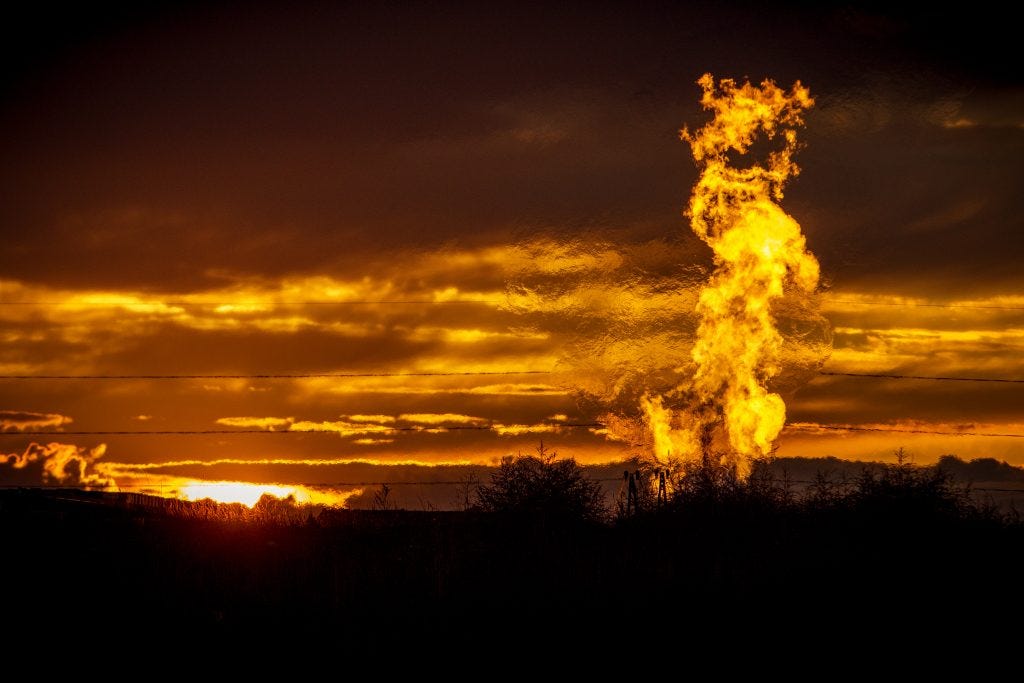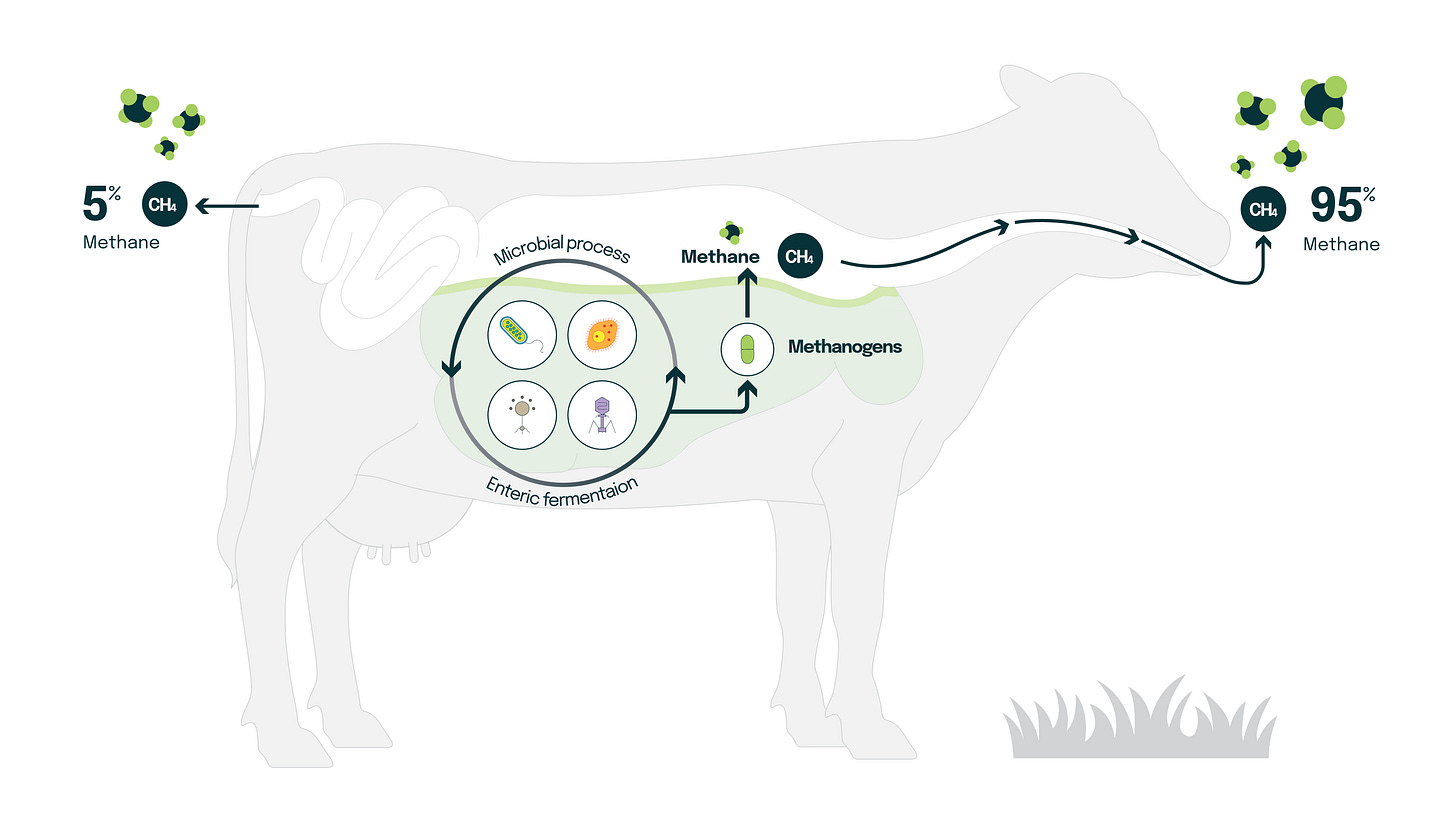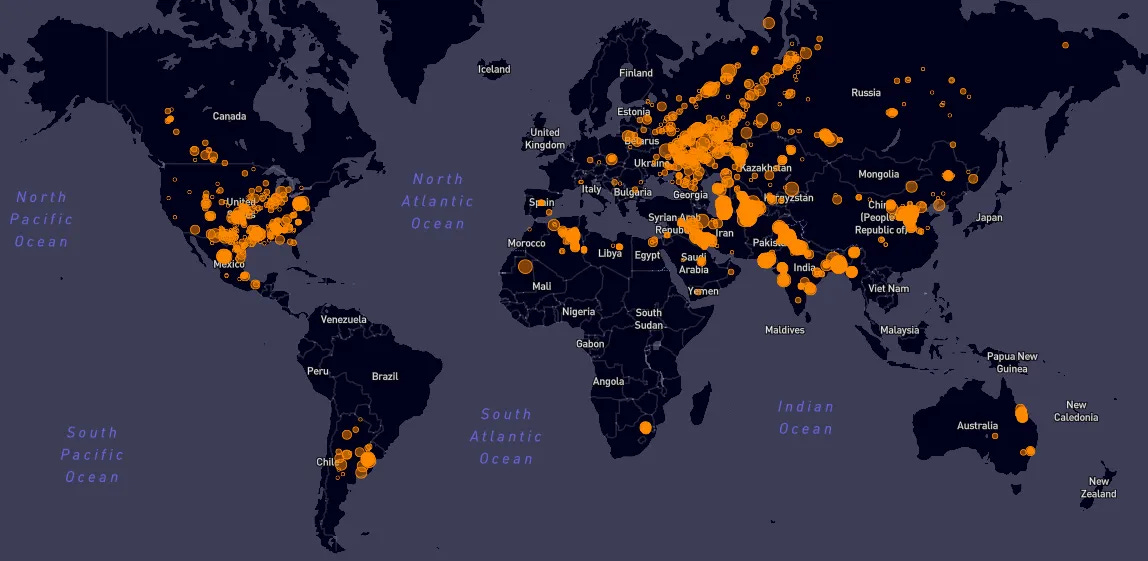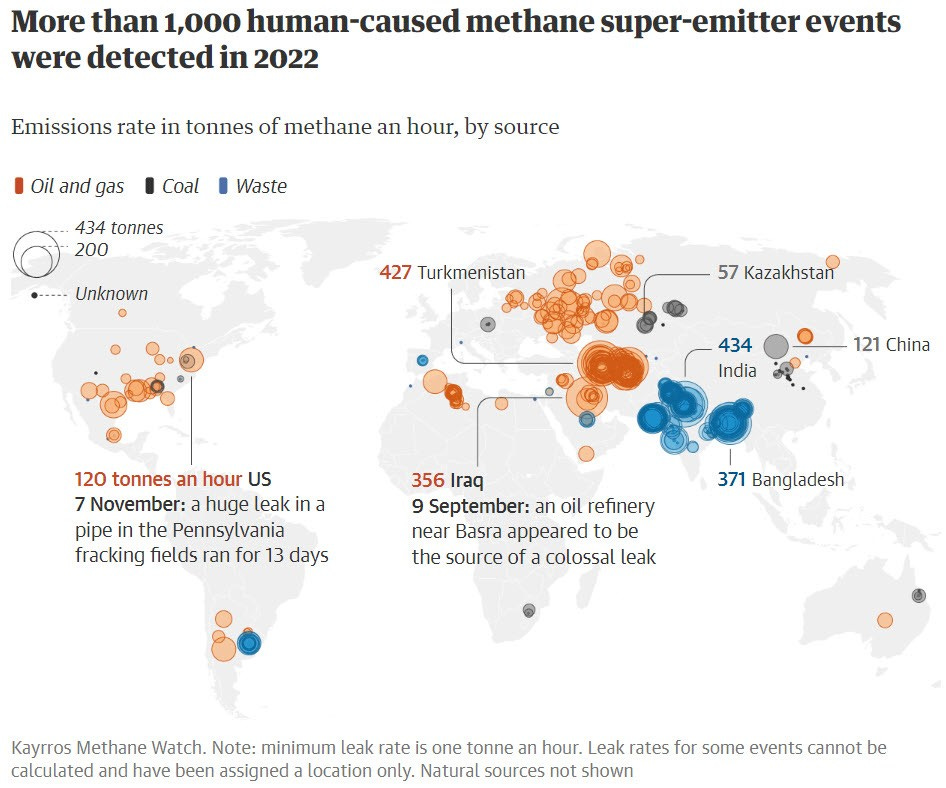The massive nature destroyer we could easily stop
A huge chunk of the global warming crisis could be tackled today without new technologies, without massive investments and without disruption to any industry ... just by fixing methane gas leaks.

CO2 and methane gas are warming our planet - leading to ever more extreme weather conditions that affect … everything. The global economy wants to keep on roaring and the industries that are the major contributors to greenhouses gases show only incremental change (greenhouse gas emissions continue to rise). But there’s one way to massively mitigate against climate change, a way that wouldn’t even require industries to change - and that would be to simply stop methane gas leaks.
Methane: 28 times as strong as CO2
Everybody knows about CO2 these days - far fewer have an understanding of methane gas. While short-lived in the atmosphere compared to CO2 - around twelve years compared to centuries with CO2 - its heat-trapping power is 28 times as potent as carbon dioxide. 28 times! In those twelve years, methane causes far more damage in warming the planet ever more quickly. Because of that, methane emissions account for somewhere between 25-30% of global warming.
Until recently, even gigantic methane leaks around the world were barely even known about. In 2023, Kayross, a data analytics company, together with the European Space Agency, established the satellite-enabled Methane Watch. Thanks to this, over one hundred countries joined the Global Methane Pledge (pledging to curb methane footprint by 30% by 2030) at COP26.
The impact on nature
And remember, nature includes our pesky little species. The easily fixable methane gas emissions are akin to throwing millions of gallons of gasoline into already burning wildfires - and fossil fuel industries could, absolutely, choose not to throw those gallons. The resulting more and more extreme weather conditions come with more extreme floods, and draughts, and wildfires. Entire landscapes are destroyed and with it, flora and fauna in unimaginable immensities.
All of it increasingly affects humanity, too. We know of the island nations that are powerless against rising sea levels. But warmer climates already wreak havoc on the Global North, too - and often not in disastrous outbursts like floods, but in silent ways we’re barely aware of. Global warming leads species to migrate - such as mosquitos bringing diseases. This is already happening: the Climate Atlas of Canada, to give just one example, highlights that mosquito-born diseases have increased by 10% in the last twenty years due to. Malaria and Dengue fever will come our way as global warming keeps ramping up.
More and more heatwaves sweep across Europe. A few years ago, entirely unequipped to handle those temperatures, hundreds of the elderly died in French nursing homes. That was a canary-in-the-coalmine moment, but the global economy just kept on roaring. As greenhouse gases continue to trap more and more and more heat, it won’t be hundreds of people dying regionally, it will be millions dying globally - there will be an increase in respiratory illnesses, strokes, dehydration, cardiovascular and cerebrovascular diseases. And don’t think it’ll just affect the elderly - it’ll be workers in many industries, it’ll be children, it’ll be pregnant women and just about everyone dealing with any medical condition will be aversely affected.
Blame it on the cows?
The agriculture industry is often seen as the major culprit when it comes to methane gas emissions. Cows have been getting an increasingly bad reputation for doing what they do – certainly can’t blame them, but what we could do is stop the meat and dairy industry from pumping ever more of their wares into humanity – if humanity were to curb meat and dairy consumption by half – the world would be far, far better off. But that’s a whole different subject, explored here.
Getting an entire industry to downsize is a tall order. Which is why I’m focusing on the energy sector and their methane leaks. No downsizing required and the remedies are straight-forward. The energy sector represents the easiest, fastest and cheapest way to massively lower methane gas emissions.
A look at the energy sector
As you see in the above chart, nearly 40% of all methane gas emissions around the world come courtesy of the energy industries (oil, gas, coal). There’s a great deal of information out there – here’s a good starting point, with the International Energy Agency's Methane Tracker. And here their latest analysis, showing that methane emissions from the energy sector remained near a record high in 2023 … this shows no signs of oft-touted mitigation efforts.
With these industries, actually very little has been regulated in the past with regard to methane gas. In oil drilling, gas is often seen as a useless by-product. Fracking brings forth both oil and gas – but while the oil is captured, capturing mechanisms for gas are often missing.
Tougher regulations are possible, of course, but just now a new report by Nature Communications highlights that there is still no consistent measuring. That in itself allows the energy sector to report in whichever way presents them in a more favorable light. Another reason why the energy sector still hasn’t improved on this is because, unlike with oil spills, most often there’s nothing to see when methane gas leaks - it is invisible.
Some reasons for methane gas emissions
Venting: That’s when methane gas is released on purpose “for safety reasons, due to the design of the facility or equipment, or operational requirements”, essentially it’s like blowing a pipeline clean for inspection or maintenance.
Flaring: You often see those flares with oil rigs – gigantic flames against the skylines. That’s done “when the natural gas cannot be used or recovered economically”. As part of this flaring, much of the gas is converted into CO2 – but a portion is still released as methane into the atmosphere.
… and then there’s Fugitive.
The super-emitters
Fugitive: is when methane emissions occur from leakages that are not intended, because of broken seals or leaking valves – or explosions. When these are large enough, scientists speak of super-emitter events, such as the results from the Nord Stream gas pipeline explosions.
There are countless methane leaks across the global on a daily basis – just look at this 2023 screenshot from the Kayross Methane Watch tracker.
This 2023 Guardian article looked at super-emitting methane leaks. Let me just share the first two paragraphs to give you a sense of scope:
“More than 1,000 “super-emitter” sites gushed the potent greenhouse gas methane into the global atmosphere in 2022, the Guardian can reveal, mostly from oil and gas facilities. The worst single leak spewed the pollution at a rate equivalent to 67m running cars. Separate data also reveals 55 “methane bombs” around the world – fossil fuel extraction sites where gas leaks alone from future production would release levels of methane equivalent to 30 years of all US greenhouse gas emissions."
As shown above, the energy industry has it in its power to track and fix and capture methane gas - for the most part, it just wasn’t mandated to do so until recently and - in most places in the world, it still isn’t. Methane gas continues to be freely flared and vented and continues to escape unchallenged into the atmosphere. If the energy sector fixes this around the globe - it can lower the expected global warming substantially. I realize that all of this may seem too broad and thus difficult to grasp - for that reason, here is ...
… one concrete example
On the 6th of November, 2022, the people of Jackson, PA, suddenly heard booming noises - like jets flying past. Little later there was the smell of rotten eggs. As it turned out, at a nearby oil and gas drilling operation a methane gas leak had occurred. It was so big that it was visible from space with a yellow cloud over Pennsylvania. The leak was fixed, but it took two weeks to do so. By that time 23’000 tons of methane had risen into the atmosphere, which is, according to the article, about as much as the emissions of 360’000 cars over the course of a whole year. You see, in a very short time, methane gas, which is vastly more damaging than CO2, can wreak havoc by trapping far more heat, thus warming our planet all the more rapidly.
As you see, methane gas severely drives global warming - leading to ever more extreme weather conditions. It affects … everything. And it CAN be tackled. So, even if humanity and leaders of industry want to keep the global economy roaring at all cost, at the very least, for the love of all of us, for the love of all of nature, the fossil fuel industry should be forced to stop ALL methane leaks.
Cheers,
If you enjoy the Rewilder Weekly …
… please consider supporting my work. Your paid subscription will help generate the funds needed to realize a unique rewilding book I’m working on. And, of course, that paid subscription also ensures that the Rewilder Weekly will always keep going for those who cannot afford to pay. A thousand thanks!














